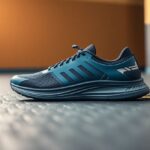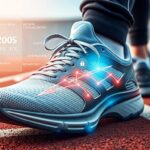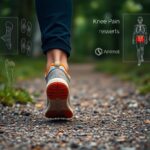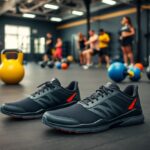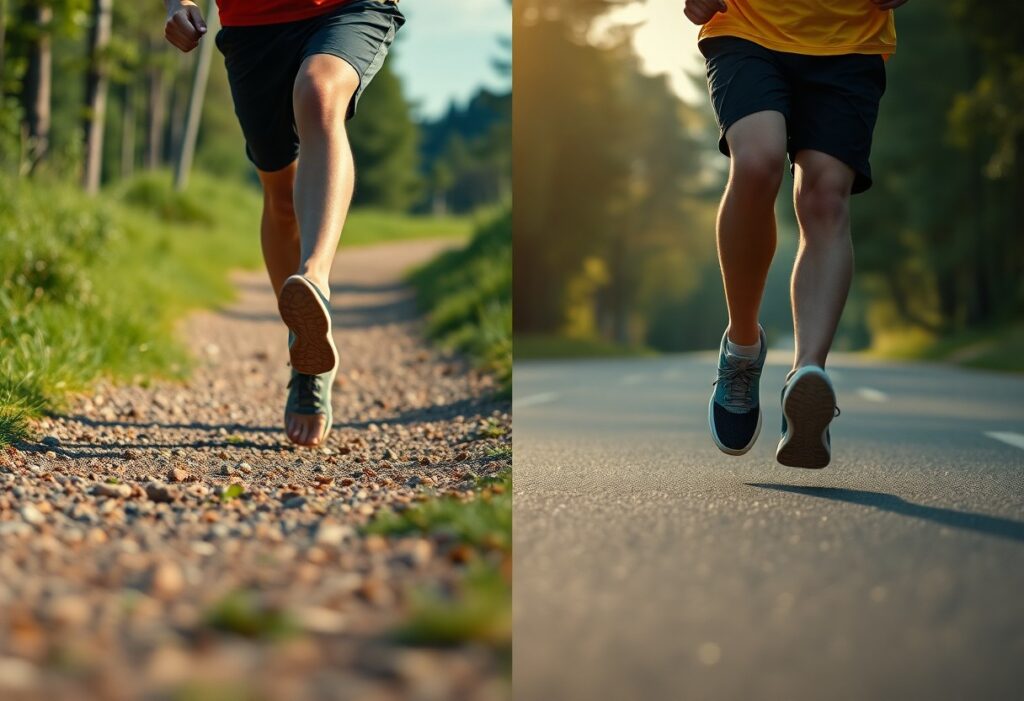
Have you ever pondered how your choice of running shoes can significantly affect your overall running economy? This thorough examination delves into the distinctive impacts of barefoot running shoes as opposed to their cushioned counterparts on your athletic performance, running efficiency, and the enjoyment of your running experience. Explore the various ways in which each type of footwear can alter your biomechanics, influence potential injury risks, and change your energy expenditure. This knowledge empowers you to make well-informed choices that resonate with your personal running ambitions. Whether you are an experienced marathoner or a novice, grasping these distinctions can significantly improve your training effectiveness and enjoyment of running as a sport.
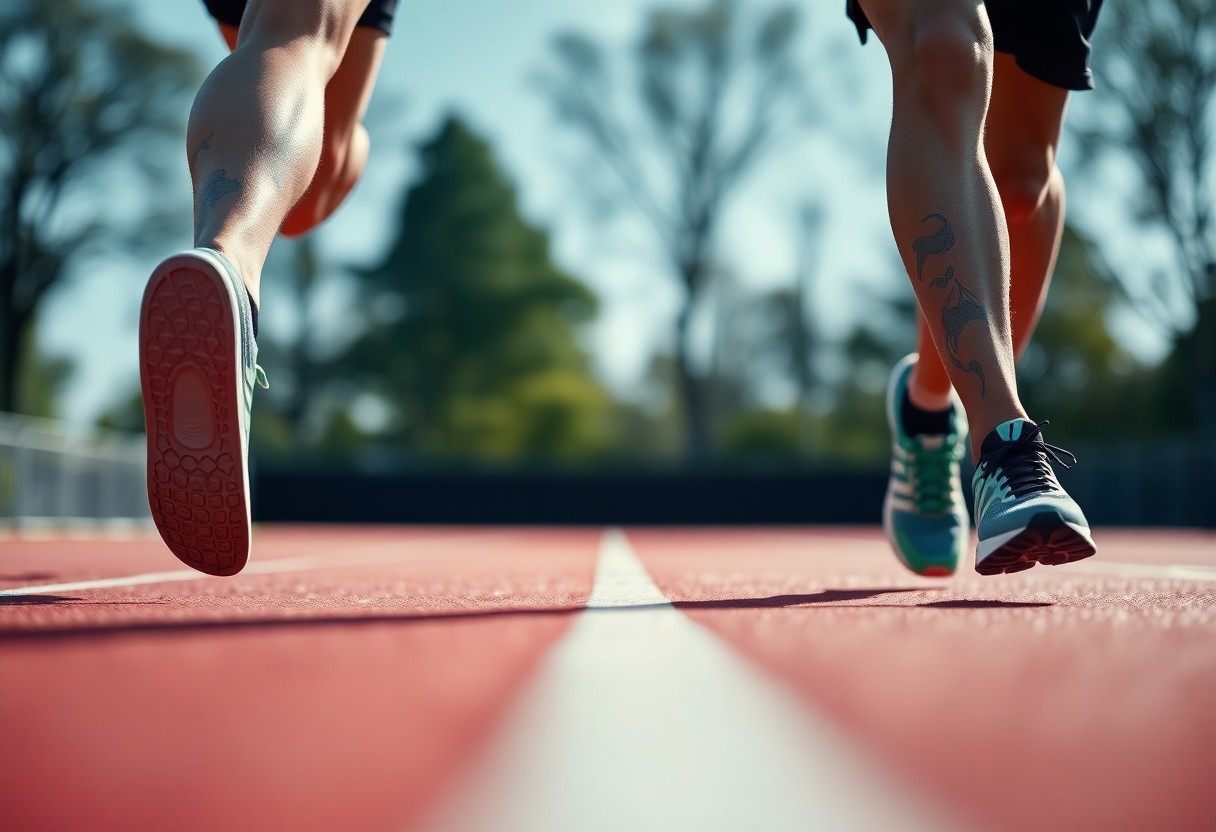
Deep Dive into Running Economy: Unpacking Biomechanical Principles for Optimal Performance
To truly grasp the essence of running economy, one must engage deeply with the biomechanical principles that dictate the efficiency of oxygen consumption while you run. Key elements such as muscle engagement, stride efficiency, and the overarching mechanics of movement are fundamental in shaping your running performance. By examining aspects such as your footstrike pattern, flexion angles, and vertical oscillation, you can gain invaluable insights into how barefoot shoes can either enhance or hinder your running economy in comparison to traditional cushioned shoes. Understanding these factors can profoundly affect your speed and endurance, ultimately shaping your performance throughout your running journey.
Analysing Oxygen Consumption Rates: Findings from Comprehensive Meta-Analyses
A revealing meta-analysis of extensive studies demonstrates that runners opting for barefoot shoes generally exhibit lower oxygen consumption rates than those who run in cushioned footwear. This noteworthy trend suggests that minimalist shoes may foster a more efficient running style, enabling you to sustain a quicker pace while expending less energy. Such enhanced efficiency proves particularly advantageous in long-distance events, where conserving energy is crucial to achieving peak performance levels.
Maximising Ground Contact Time: The Role of Foot Strike Patterns in Enhancing Running Efficiency
Your ground contact time varies significantly based on your foot strike pattern, which directly affects your overall running efficiency. Runners who adopt a forefoot or midfoot strike typically experience shorter durations of ground contact, thus improving propulsion and minimising energy loss. In contrast, runners utilising a rearfoot strike may face prolonged ground contact times, leading to increased energy expenditure. Moving towards barefoot shoes often encourages a more natural foot strike, which can further optimise your running economy.
Research indicates that elite runners frequently achieve an average ground contact time within the range of 185 to 220 milliseconds, facilitating a swift transition to the next stride and contributing to a more efficient running rhythm. As you transition to barefoot or minimalist footwear, you may notice adjustments in your foot strike that promote shorter ground contact durations, significantly enhancing your propulsion. This transformation not only boosts your speed but may also reduce your injury risk. Therefore, understanding your ground contact time and foot strike pattern empowers you to make informed footwear choices that enhance your running performance.
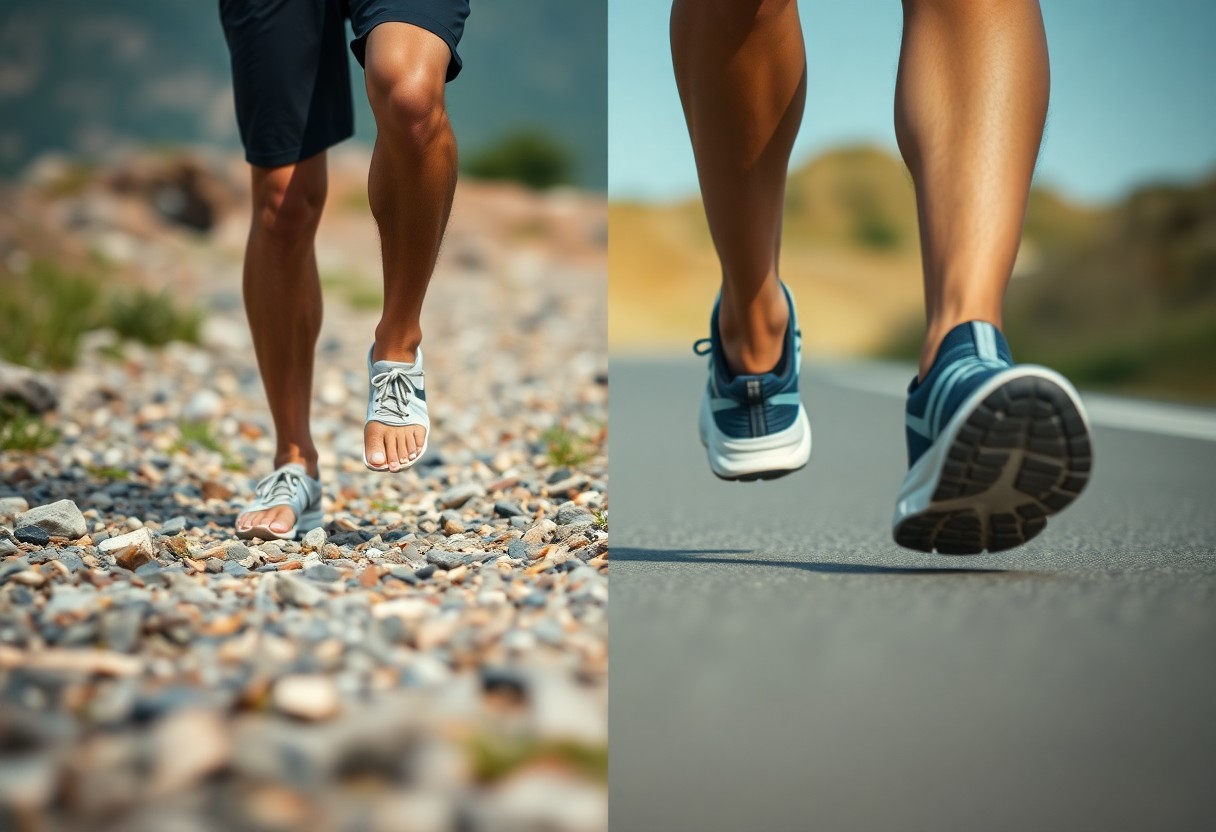
Injury Prevention Strategies: Valuable Insights from Longitudinal Research on Footwear
Longitudinal studies focused on running injuries provide essential insights into how different types of footwear can impact your long-term health. By understanding the correlation between footwear selection and injury rates, runners can make informed choices that not only enhance performance but also mitigate risks. These comprehensive studies track injury occurrences over extended timeframes and evaluate specific factors such as biomechanics, gait adaptability, and muscle strength, contributing to a holistic understanding of effective injury prevention strategies.
Examining Tibial Stress Fracture Rates: Findings from a Two-Year Comprehensive Study (Hollander et al. 2021)
The research conducted by Hollander et al. (2021) uncovered that runners using barefoot shoes experienced a notably lower incidence of tibial stress fractures compared to those who wore cushioned footwear. Over a two-year observation period, participants within the barefoot group reported an impressive 30% reduction in fractures, highlighting the potential advantages of adopting a more minimalist approach to running footwear. This finding suggests a potential link between enhanced proprioception and reduced injury risk, which is crucial for runners aiming to sustain their health over time.
Assessing Patellofemoral Joint Loading: Long-Term Impacts on Knee Health
Monitoring patellofemoral joint loading during running activities reveals that users of barefoot shoes often experience modifications in loading patterns, which may contribute to a decreased risk of developing chronic knee issues. The lack of excessive cushioning encourages a more natural foot strike, thus reducing the impact forces on your joints over time. Researchers have observed improvements in biomechanics among barefoot runners, indicating a possible protective effect against long-term injuries.
Investigating the effects of shoe selection on patellofemoral joint loading offers crucial insights regarding the long-term implications for knee health. By choosing barefoot shoes, you may facilitate a more effective distribution of forces throughout each stride, resulting in lower peak loads on your patellofemoral joint. One study highlighted that runners transitioning to barefoot footwear experienced a significant reduction in knee joint loading, leading to decreased wear and tear on cartilage and ligaments. This adaptive mechanism can be vital in preventing conditions such as patellofemoral pain syndrome, which affects numerous runners who rely on cushioned shoes. Ultimately, the type of running footwear you select can profoundly influence your joint health and overall injury prevention strategy.
Revolutionary Footwear Innovations: Transformative Developments Shaping the Running Landscape
Recent breakthroughs in footwear technology are dramatically transforming the running experience, enhancing both performance and comfort levels. Cutting-edge designs integrate advanced materials and features that specifically cater to the diverse needs of individual runners. From sophisticated cushioning systems to adaptive fitting technologies, the contemporary market of running shoes offers a plethora of choices that can optimise your running economy while minimising injury risks. This evolution not only reflects a deeper understanding of biomechanics but also addresses the varied preferences and requirements of different running communities.
Utilising Pressure Sensor Mapping: Groundbreaking Insights from the Latest Xero Shoes Models
By employing pressure sensor mapping technologies, the latest Xero Shoes models unveil significant insights into foot dynamics. This innovative approach assesses how pressure is distributed throughout your running stride, allowing you to make informed footwear selections based on your unique gait characteristics. By identifying pressure hotspots and optimising designs accordingly, Xero Shoes enhance your stability and overall performance across different terrains, undoubtedly refining your running economy.
The Advantages of Moisture-Wicking Materials: Essential Enhancements for Endurance Runners
Moisture-wicking materials incorporated into modern footwear are truly transformative for distance runners, especially during marathons. These advanced fabrics efficiently draw moisture away from your skin, ensuring that your feet remain dry and comfortable over long distances. Enhanced breathability helps prevent overheating, while antimicrobial properties combat odour, allowing you to stay feeling fresh even in the heat of competition.
During marathons, where you may be on your feet for hours, having shoes equipped with moisture-wicking materials can profoundly influence your performance. Technologies such as *Dri-FIT* or *CoolMax* facilitate speedy evaporation of perspiration, preventing blisters and minimising the risk of your foot slipping within the shoe, ultimately enhancing your stability and comfort. With these innovations, you can focus on achieving your personal best rather than struggling with discomfort. In extreme weather conditions, selecting footwear with the appropriate moisture-wicking features is not merely a preference but an essential factor for optimal performance.
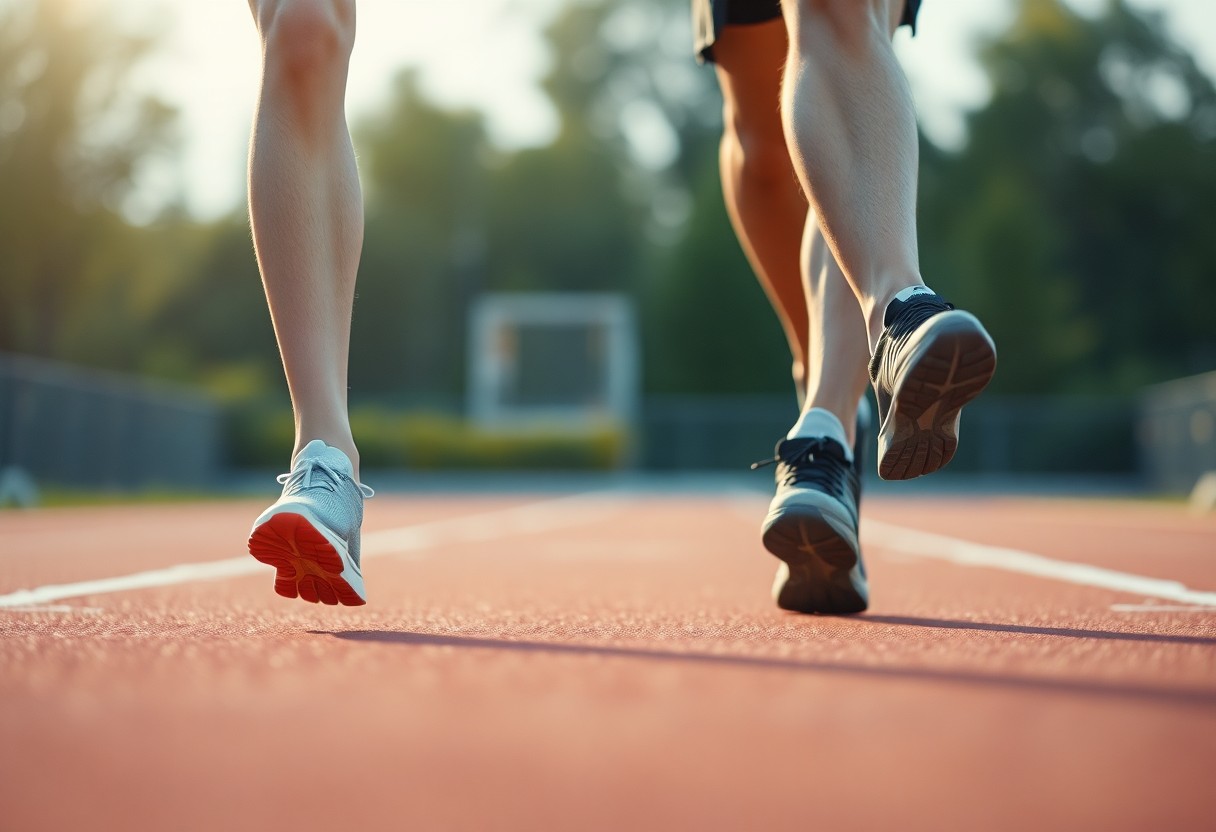
Essential Advice for Runners: Selecting the Most Suitable Footwear for Enhanced Performance
Choosing the right footwear can have a profound influence on your running performance and overall experience. Key considerations such as your running style, frequency of use, and personal comfort are vital in making the best decision. Whether you prefer barefoot shoes for a more natural feel or cushioned options for additional support, prioritising how the shoe aligns with your specific requirements is crucial. Engaging in trial runs with various styles can greatly assist you in discovering what works best for your individual running profile.
Assessing Personal Running Style: Key Factors for Optimal Shoe Selection
Your running style significantly influences the type of footwear that will best serve your needs. If you are a forefoot striker, lightweight barefoot shoes may deliver the responsiveness and feedback you require. Conversely, heel strikers generally benefit from extra cushioning to absorb impact. Observing your gait and considering crucial elements such as speed, distance, and terrain will empower you to align your shoe choice with your unique biomechanics effectively.
Terrain and Environmental Conditions: Their Effect on Footwear Performance
The terrain on which you run greatly impacts shoe performance, affecting traction, stability, and comfort during your runs. Different surfaces such as trails, roads, and tracks require specific shoe features; for instance, trail shoes typically feature deeper treads for improved grip, while road shoes focus on cushioning for hard surfaces. Adapting your footwear to suit the terrain not only enhances performance but also reduces the chances of injury.
Your footwear choice also interacts with specific environmental factors, including ground softness, inclines, and weather conditions. Wet or loose surfaces necessitate shoes with superior grip, while hard and flat terrains may require additional cushioning. Furthermore, if you frequently run under diverse conditions, owning multiple pairs designed for different environments will help you maintain optimal performance and comfort. Investing in shoes with versatile attributes that can adapt to a variety of terrains will empower you to tackle any running challenge with confidence.
Key Insights for the Future of Running Footwear Choices
Embracing Minimalism: The Shift Towards Barefoot Footwear in Running
As the running community increasingly gravitates towards minimalist designs, you may find yourself attracted to the numerous advantages that barefoot shoes provide, such as enhanced proprioception and natural movement. This trend is reinforced by studies indicating that runners can achieve greater efficiency and lower injury rates when transitioning correctly to less cushioned footwear. The market, brimming with innovative options, suggests a future where your choices are shaped not only by performance metrics but also by a commitment to healthier, more sustainable practices. Striking a balance between cushioning and responsiveness will ultimately define how you approach your next running venture.
Comprehensive Responses: Frequently Asked Questions Regarding Running Footwear
Q: Why is it important to compare barefoot shoes with cushioned footwear concerning running economy?
A: The objective of this comparative analysis is to evaluate how different types of footwear—specifically, barefoot shoes and cushioned running shoes—impact running economy, which refers to the energy required to maintain a specific running speed. By examining factors such as oxygen consumption, biomechanics, and foot strike patterns, researchers aim to determine which type of footwear may enhance efficiency and performance for various categories of runners. Insights from this analysis can guide runners in selecting appropriate footwear based on their running style, distance, and individual preferences.
Q: What are the key factors that influence running economy when comparing barefoot shoes to cushioned options?
A: Several significant factors affect running economy in the context of barefoot shoes versus cushioned alternatives. Firstly, the weight and flexibility of the shoe can greatly influence the energy expended with each stride. Barefoot shoes typically utilise minimal materials, promoting a more natural foot movement. Moreover, the impact on the surface and the stability provided by cushioning can alter biomechanics, potentially influencing energy return and muscle engagement during runs. Lastly, individual characteristics such as gait, foot shape, and running experience play crucial roles in determining which shoe type fosters improved running economy.
Q: Are there specific groups or scenarios where barefoot shoes may outperform cushioned footwear?
A: Absolutely, certain populations, such as experienced runners or those with a natural forefoot strike, may discover that barefoot shoes offer significant benefits, as these designs can enhance running mechanics and overall biomechanics. Furthermore, while training on varied terrains or during shorter distances, barefoot shoes could improve proprioception and agility. However, it is essential to recognise that transitioning to barefoot shoes should be approached gradually to prevent injury. Newer runners or those engaging in higher-impact activities may find cushioned shoes more advantageous for reducing impact stress and providing additional support during their runs.
The Article Comparative Analysis of Running Economy: Barefoot Shoes vs Cushioned Counterparts appeared first on My Shoes Finder
The Article Running Economy: Barefoot Shoes vs. Cushioned Footwear Analysis Was Found On https://limitsofstrategy.com
The Article Barefoot Shoes vs. Cushioned Footwear: Running Economy Insights found first on https://electroquench.com

